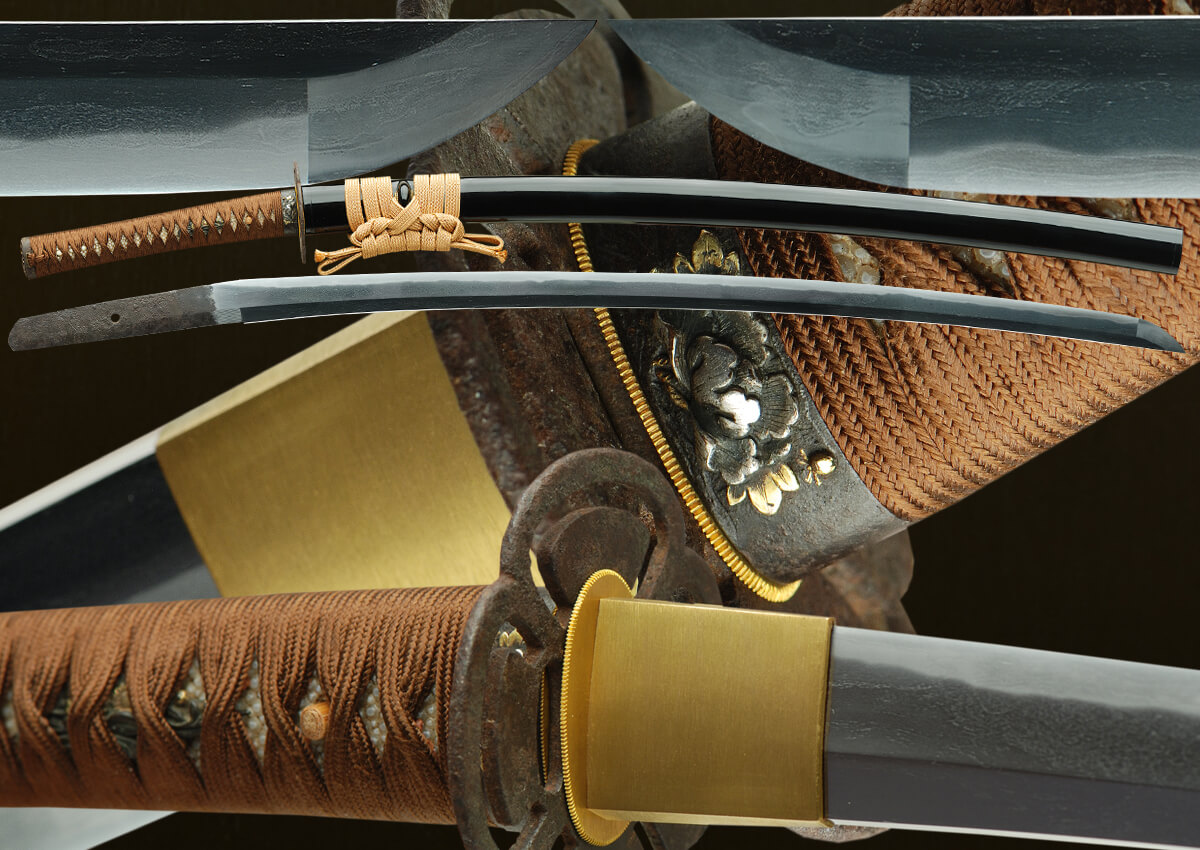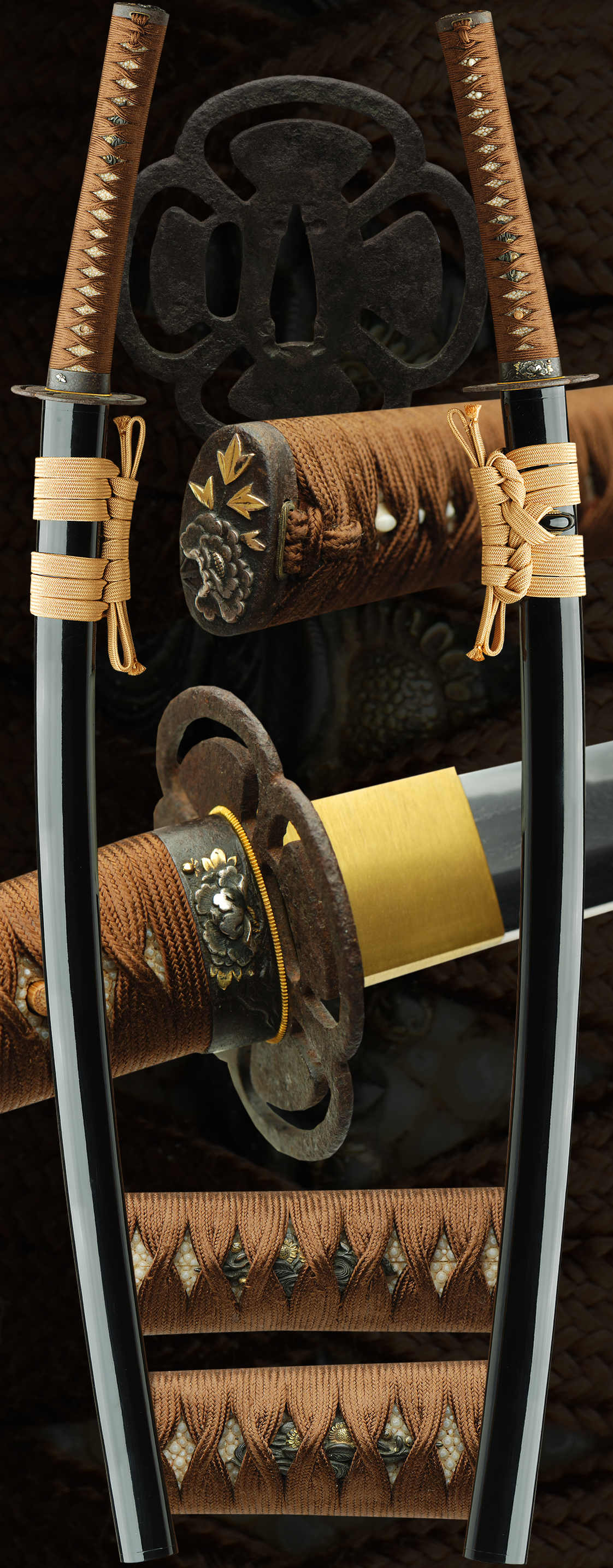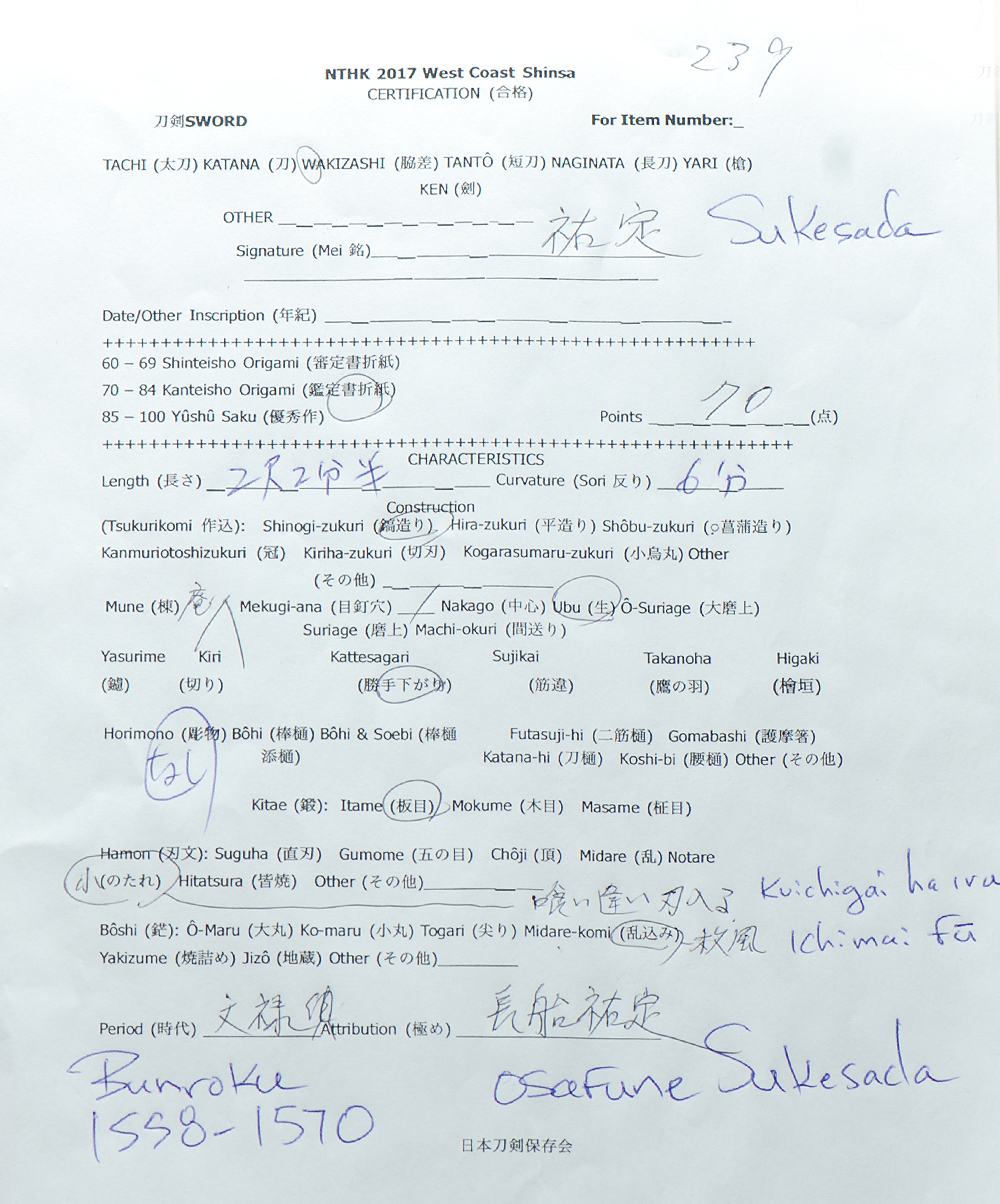A one handed katana from the Bizen Sukesada school. TheBlade is of uchi katana length with a hamon of Bizen midare. The nie deki hamon is very well done . Ashi and small kinsuji are seen along with fine mokume itame hada.The boshi is in midare komi and ichimai. Blade is gorgeous and in good condition, especially for its age. The tang is ubu 1 hole and signed with 2 character signature (Sukesada).
During the twelfth century Uchigatana started to be used and by the Muromachi Period approximately 1336 to 1573 the uchigatana began to rival the tachi as the sword of choice by warriors. Unlike the tachi, the uchigatana was worn edge-up in the belt, this and usually being slightly smaller than the tachi was the main difference between the tachi and the uchigatana. Since it is worn differently, the engraved words on the sword are also opposite to the tachi, making the words still upright instead of upside-down like when one wears the tachi like an uchigatana. This sword became popular for several reasons, the uchigatana was more convenient to wear and did not get in the way of using a polearm as much as a tachi, also the frequency of battles fought on foot and the need for speed on the battlefield, were major reasons for the uchigatana being rapidly accepted and indicated that battlefield combat had grown in intensity. Since it was shorter, it could be used in more confined quarters, such as inside a building.
Unlike the tachi, with which the acts of drawing and striking with the sword were two separate actions, unsheathing the uchigatana and cutting the enemy down with it became one smooth, lightning-fast action (this technique was called battojutso otherwise known as Battokiri). The curvature on the blade of the uchigatana differs from the tachi in that the blade has curvature near the sword’s point (sakizori), as opposed to curvature near the sword’s hilt (koshizori) like the tachi. Because the sword is being drawn from below, the act of unsheathing became the act of striking. For a soldier on horseback, the sakizori curve of the uchigatana was essential in such a blade, since it allows the sword to come out of the saya (sheath) at the most convenient angle for executing an immediate cut.
The word uchigatana can be found in literary works as early as the kamakura period, but during that time the uchigatana was used. The Muromachi Period (considered by some to be a kind of dark age in the history of the Japanese Sword), when the samurai began to use them to supplement the longer tachi, that uchigatana of high quality began to be made. In the Momoyama and Edo Periods, the tachi was almost totally abandoned and the custom of wearing a pair of long and short uchigatana together, the daisho (literally “big-little”) became the dominant sign of the Samurai class.
The mounts are very nice. The excellent handle wrap adds to the flavor of the mount and is of a brown color.the saya is well made and of black lacquer. There are gold shitodome in the kurikata and make for a complete package. In terms of fittings, the very nice floral theme is carried throughout. The tsuba is of iron and a sukashi style.The sageo is a goldish brown and all in all a very nice blade that is healthy, made even more desirable in these mounts.
In the Muromachi period, Harima, Mimasaka and Bizen province
had prospered under the protection of the Akamatsu family.
Bizen province turned out a great many talented swordsmiths.
Supplying the demand of the Age of Provincial Wars in Japan, a large number
of swords were made there in the late Muromachi period. Sukesada has become a synonym
for the Osafune School though the founder was Mitsutada.
It is regrettable that a deluge devastated the School in Osafune districts in theTensho era.
The Osafune School whose prosperity
and power had been unparalleled, perished in the great deluge.
These old swords are all that is left to tell how these swordsmiths lived.
This blade is not of mass production.
The Jigane is well grained with Jinie attached and much hataraki. The Hamon is very elegant.
Utsuri can be seen.
- Mei: Sukesada
- Date: Bunroku (1558’s-1570’s)
- Nagasa: 24-1/8 inches
- Sori: 18.0 mm
- Width at the ha-machi: 29.4 mm
- Width at the yokote: 20.2 mm
- Thickness at the mune-machi: 6.5 mm
- Construction: Shinogi zukuri
- Mune: Iori
- Nakago: Ubu
- Kitae: Itame/mokume
- Hamon: Midare
- Boshi: ichimai
- Condition: Good polish
(shipping and insurance included)
Email us if your interested in this item and remember to include the order number for this item: fss-757.
Click to Enlarge Image
Click to Enlarge Image
This sword has recently passed shinsa. This is the work sheet, the oficial papers will take a few month to be made and sent from Japan. These papers will be forwarded to the new owner when this sword sells.
For Sale

























